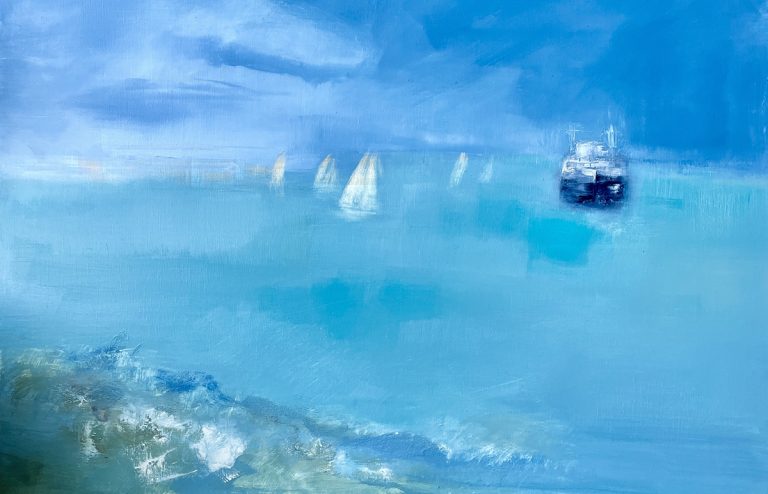Eva Lemay doesn’t begin a painting with a plan. Her work grows out of sensation—what the body remembers, what the skin picks up before the eye fully registers it. Her way of seeing the world comes from deep inside: rooted in a lifelong closeness to nature and shaped by the act of paying attention. Color leads her. So does rhythm. So does instinct. She doesn’t try to replicate the landscape but responds to it—through movement, through tone, through atmosphere. She paints with oils, keeping the paint fluid, letting greens, blues, and yellows blur into each other like weather. Her paintings hold the shape of a moment that hasn’t fully settled. Nothing is pinned down. Everything is felt.
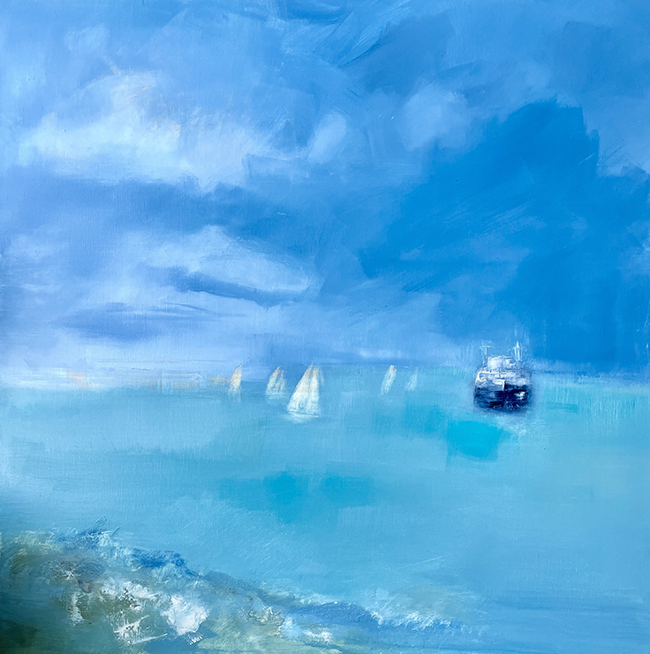
In one canvas, sea and sky fold into each other. The horizon dissolves. Sailboats hover in a band of turquoise, just visible through the light. Off to the side, a dark ship anchors the composition—a small weight against an otherwise drifting scene. Lemay’s brushstrokes are soft and unhurried. Color floats. Light glints. The quiet of the painting isn’t empty—it’s suspended. The calm feels full of motion, like a breath held in the lungs just a second longer than usual.
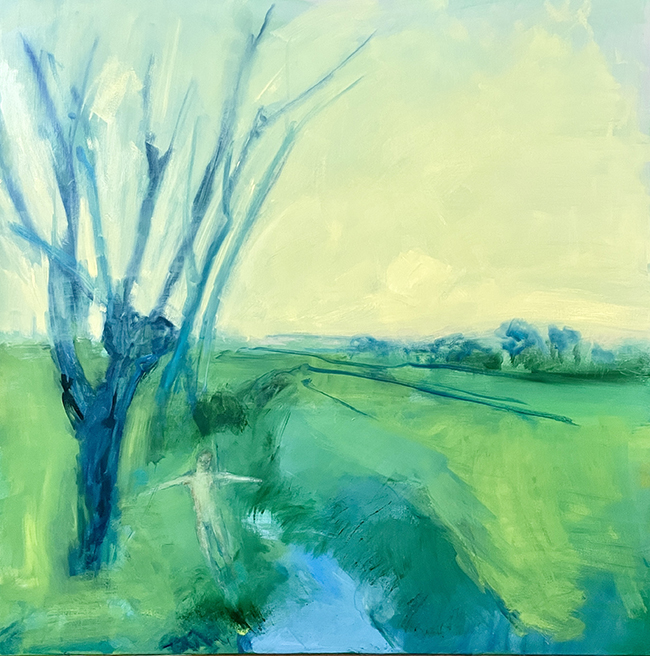
Another piece takes us beneath the surface. A pond, or maybe just the impression of one, hums with greens and aquas, stirred with streaks of yellow. Nothing is clearly defined. Lily pads, water currents, maybe light refracting—all of it blends together in layered transparencies. It’s not a depiction. It’s more like a trace of presence, the suggestion of something living just below. Lemay isn’t offering a scene to study. She’s creating space for us to float in. You’re not meant to analyze. You’re meant to feel your way through.
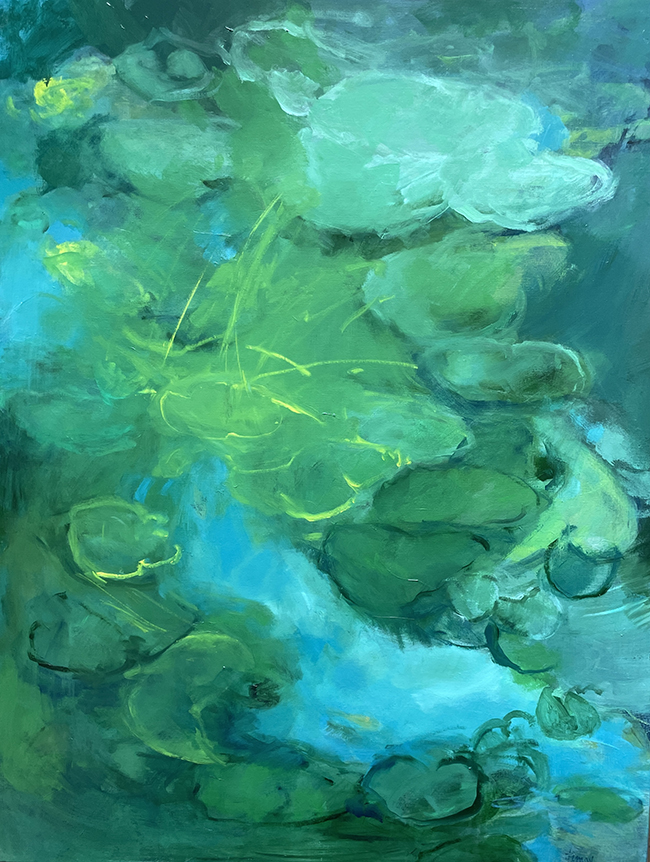
Elsewhere, a tall tree stretches up from the edge of a green field. The lines are loose. A figure stands at the base, arms out, barely formed but undeniably there. The whole landscape tilts toward openness—spacious skies, soft hills, a stream that winds through like a whisper. There’s no grand event here. No climax. But there is something that holds you still. Lemay’s sense of space invites pause. Her land isn’t just observed—it’s inhabited.
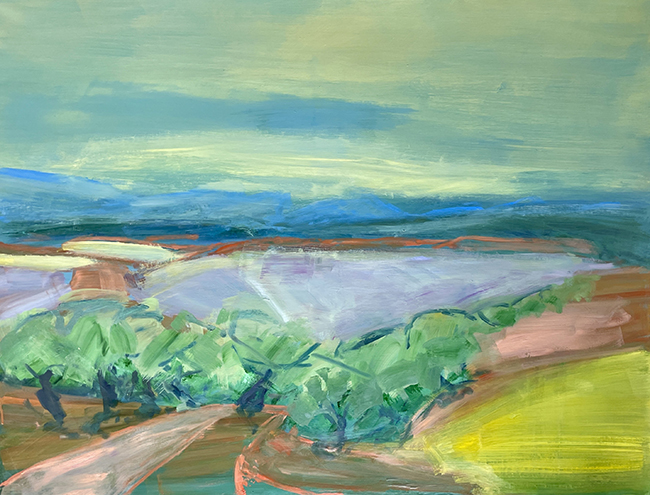
She keeps returning to the same touchstones: trees, water, light, the shape of air. These elements aren’t just backdrops. They carry emotional weight. They recur not as fixed images but as changing presences, shifting from canvas to canvas, never landing in one form for long. Her style, too, shifts. Some works lean closer to representation. Others drift into abstraction. But always there’s that pull toward something just out of reach—something already fading or about to.
There’s a quiet urgency in Lemay’s paintings, though it never tips into protest. She isn’t trying to argue a point. Instead, her work is about reconnecting with the land—through intimacy, through memory, through a slowed-down kind of seeing. Her painting is an act of care. Of tuning in. Of keeping close what’s often pushed aside.
That attentiveness shows in the way she handles her materials—lightly, gently, without rushing. She isn’t interested in spectacle. Her strength is in restraint. She holds space, rather than fills it. In doing so, she gives us a chance to remember what it’s like to feel close to the world again. Not in a grand, sweeping way, but in the small things: a ripple of water, a flash of yellow, the stillness under a tree.
Eva Lemay’s art doesn’t separate the emotional from the natural. It understands that they are tied—threaded through the same rhythms of change and loss and return. Her paintings carry a quiet grief for what might be vanishing, but also a deep appreciation for what remains. They don’t press or persuade. They simply hold us still and ask us to notice.
Sometimes a landscape doesn’t need to show us anything new. It just needs to bring us back. Lemay’s paintings do that. They don’t shout for attention. They hum.

